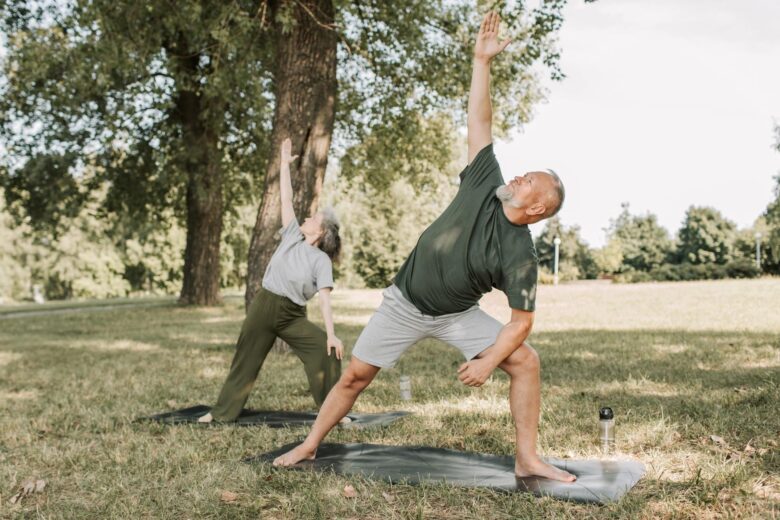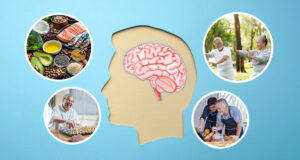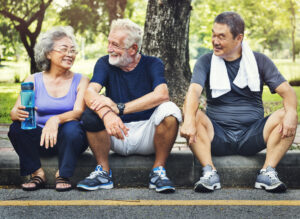Staying active and strong as you age is one of the best ways to maintain independence, boost energy levels, and enjoy daily life with greater ease. While aging naturally brings physical changes, regular movement and healthy habits can significantly slow down decline, improve balance and strength, and reduce the risk of chronic disease. For seniors, staying active isn’t just about exercise—it’s about creating a lifestyle that supports long-term vitality, mobility, and joy.
The good news is that it’s never too late to start. With a few smart strategies, seniors can stay active and strong, enjoy greater freedom, and enhance their quality of life.
The Benefits of Staying Active in Later Life
Physical activity offers numerous benefits for seniors, from improving heart health to maintaining muscle and bone strength. Regular movement supports better balance and coordination, which helps prevent falls—a leading cause of injury in older adults. Exercise also reduces the risk of developing chronic diseases like diabetes, heart disease, and arthritis.
Beyond physical health, staying active boosts mood, supports cognitive function, reduces anxiety, and enhances sleep quality. It can also help seniors maintain independence longer by making everyday tasks—like climbing stairs or carrying groceries—easier and safer.
Start with Safe, Low-Impact Exercises
For seniors, safety and comfort should always be top priorities. Low-impact activities are ideal because they protect joints while still offering plenty of health benefits. Walking, swimming, tai chi, and chair yoga are excellent options that can be adjusted to suit any fitness level.
Walking improves cardiovascular health and is gentle on the knees and hips. Swimming or water aerobics offers resistance without strain. Tai chi supports balance, coordination, and flexibility, while chair yoga is perfect for those with limited mobility or who are just beginning their fitness journey.
The key is to choose activities that feel enjoyable and sustainable. Even short sessions—10 to 20 minutes—done consistently can create real results over time.
Build Strength to Stay Independent
Maintaining muscle mass is vital for everyday independence, especially when it comes to standing up, walking, or lifting objects. Strength training helps preserve muscle, increase bone density, and improve joint health. It also supports better posture, which can help reduce the risk of back pain and injury.
Simple strength exercises using resistance bands, light weights, or even bodyweight can be done at home or in a fitness class. Moves like seated leg lifts, wall push-ups, and chair squats are beginner-friendly and effective.
Start with two sessions per week, with rest days in between. Focus on proper form and breathing. As confidence builds, exercises can be progressed with slightly more weight or added repetitions.
Don’t Forget Flexibility and Balance
As we age, our muscles and joints can stiffen, and our balance can decline, increasing the risk of falls. That’s why adding flexibility and balance exercises is crucial. Gentle stretching improves mobility and posture, while balance exercises help maintain coordination and stability.
Spending a few minutes each day stretching the hips, shoulders, legs, and back can make daily movements easier. Simple balance exercises like standing on one foot or heel-to-toe walking can be done safely at home, ideally near a sturdy surface for support.
Programs like yoga and tai chi combine both balance and flexibility while promoting mental relaxation and body awareness.
Create a Daily Movement Routine
Staying active doesn’t always require a formal workout. Incorporating movement into your daily routine can keep your body engaged and reduce stiffness. Gardening, dancing, walking the dog, or doing light housework all count as physical activity.
Try setting small daily movement goals, such as a 10-minute morning walk or stretching during TV commercial breaks. These small, consistent efforts add up and help reinforce an active lifestyle. Creating a regular routine—same time each day—also builds consistency and turns activity into a healthy habit.
Stay Socially Connected Through Movement
Physical activity becomes even more enjoyable and sustainable when it’s shared with others. Joining a senior fitness class, walking group, or dance session can make staying active feel more fun and less like a chore. Social interaction also reduces the risk of depression and loneliness, which are common concerns among older adults.
Local community centers, senior centers, and recreation programs often offer affordable or free exercise classes designed specifically for seniors. These classes are tailored to older adults’ needs and offer a safe environment to build strength, make friends, and stay motivated.
Listen to Your Body and Modify as Needed
Every senior’s body is different, and it’s important to respect personal limits. If something feels painful or too difficult, modify the movement or take a break. Gentle progress is better than pushing too hard and risking injury. On days when energy is low, a simple walk or some stretching may be enough.
Before starting a new exercise program, it’s always wise to consult with a healthcare provider—especially if there are pre-existing conditions or mobility issues. A doctor or physical therapist can help design a routine that’s safe, appropriate, and beneficial.
Nutrition and Hydration Matter, Too
Staying strong and active isn’t just about movement—it’s also about fueling your body with the right nutrients. Seniors should focus on a balanced diet rich in fruits, vegetables, lean proteins, healthy fats, and whole grains. Calcium and vitamin D are especially important for bone health, while protein helps maintain muscle mass.
Hydration also plays a key role in overall wellness. Older adults may feel less thirsty, but their bodies still need plenty of fluids. Drinking water regularly throughout the day supports energy, digestion, and joint health.
Keep the Mind Active
Physical health and mental health go hand in hand. Activities that challenge the brain—such as puzzles, reading, writing, or learning something new—can help maintain memory and concentration. Many seniors also benefit from combining movement with mindfulness, such as walking in nature or practicing meditation.
Mental stimulation helps prevent cognitive decline and supports a sharper mind, which in turn promotes confidence and independence in daily living.
Celebrate Progress and Stay Positive
Staying active and strong is a lifelong journey, and every effort counts. Celebrate small milestones, whether it’s walking farther than before, feeling more flexible, or climbing stairs with greater ease. Progress may be gradual, but it’s meaningful and empowering.
A positive mindset is essential. Focus on what you can do, rather than what you can’t. Aging brings changes, but with the right habits, seniors can stay strong, independent, and full of life well into their later years.
Conclusion: Lifelong Strength and Independence
Staying active as a senior is not about intense workouts or big goals—it’s about making consistent, gentle efforts that support mobility, strength, and happiness. With the right balance of movement, nutrition, social connection, and self-care, seniors can maintain their independence, enjoy more energy, and live a life full of vitality and purpose.




